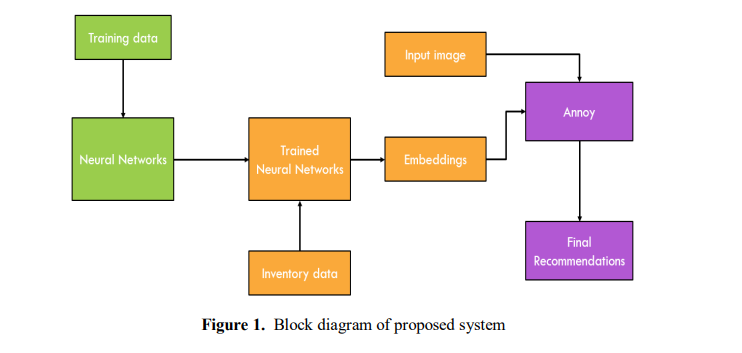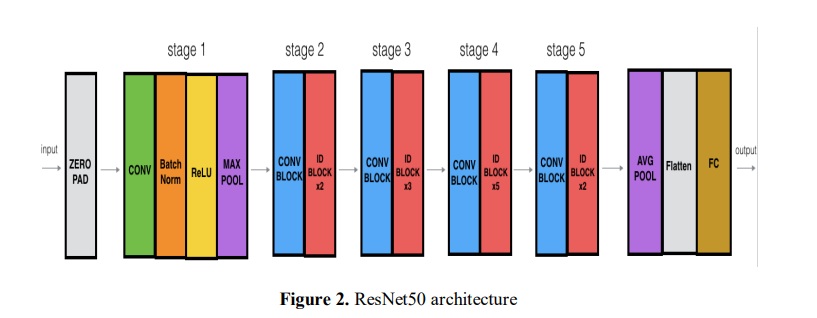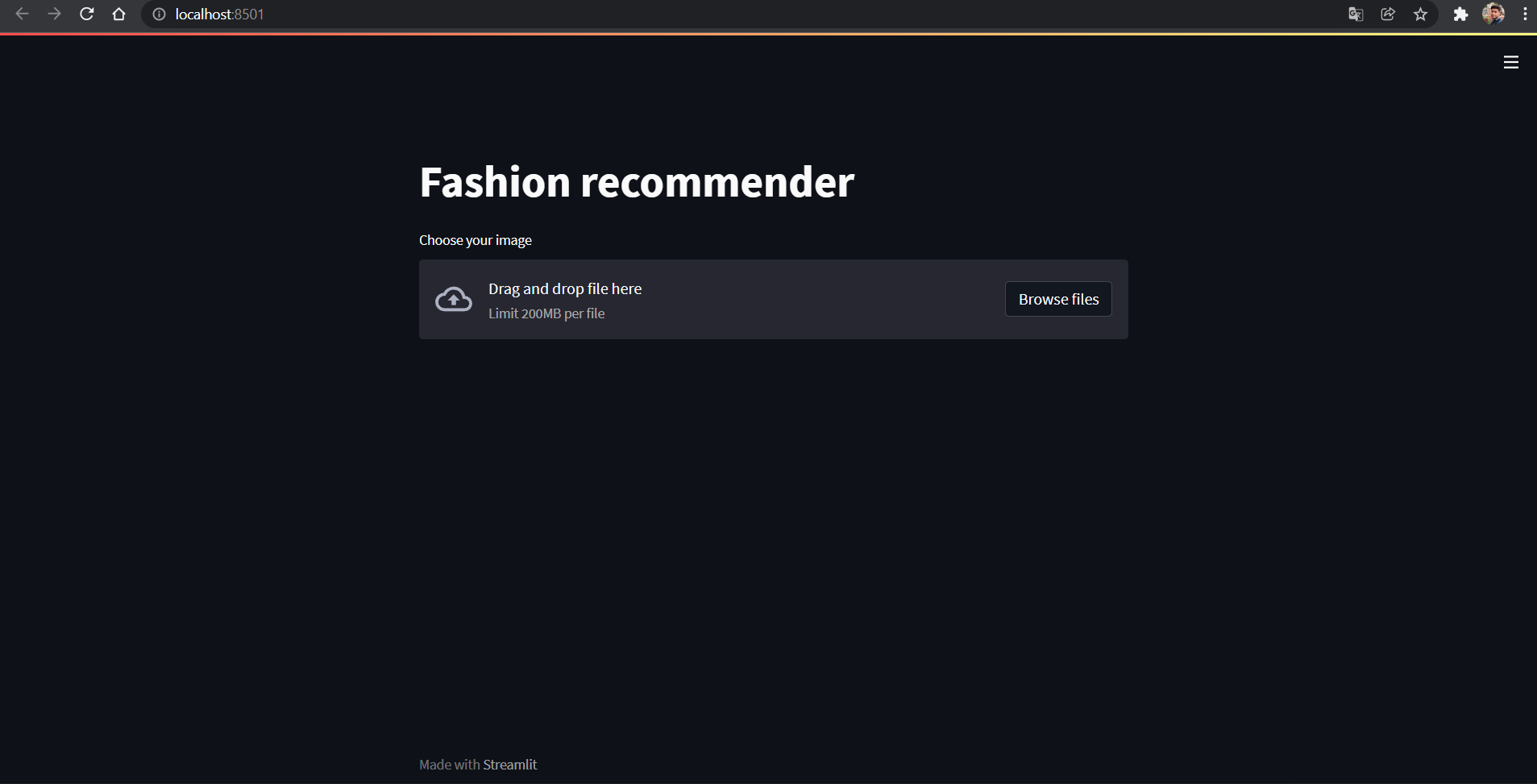Fashion Recommender System Save
A fashion Recommender system using deep learning Resnet50 and Nearest neighbour algorithm
Fashion Recommender system
With an increase in the standard of living, peoples' attention gradually moved towards fashion that is concerned to be a popular aesthetic expression. Humans are inevitably drawn towards something that is visually more attractive. This tendency of humans has led to the development of the fashion industry over the course of time. However, given too many options of garments on the e-commerce websites, has presented new challenges to the customers in identifying their correct outfit. Thus, in this project, we proposed a personalized Fashion Recommender system that generates recommendations for the user based on an input given. Unlike the conventional systems that rely on the user's previous purchases and history, this project aims at using an image of a product given as input by the user to generate recommendations since many-a-time people see something that they are interested in and tend to look for products that are similar to that. We use neural networks to process the images from Fashion Product Images Dataset and the Nearest neighbour backed recommender to generate the final recommendations.
Introduction
Humans are inevitably drawn towards something that is visually more attractive. This tendency of humans has led to development of fashion industry over the course of time. With introduction of recommender systems in multiple domains, retail industries are coming forward with investments in latest technology to improve their business. Fashion has been in existence since centuries and will be prevalent in the coming days as well. Women are more correlated with fashion and style, and they have a larger product base to deal with making it difficult to take decisions. It has become an important aspect of life for modern families since a person is more often than not judged based on his attire. Moreover, apparel providers need their customers to explore their entire product line so they can choose what they like the most which is not possible by simply going into a cloth store.
Related work
In the online internet era, the idea of Recommendation technology was initially introduced in the mid-90s. Proposed CRESA that combined visual features, textual attributes and visual attention of the user to build the clothes profile and generate recommendations. Utilized fashion magazines photographs to generate recommendations. Multiple features from the images were extracted to learn the contents like fabric, collar, sleeves, etc., to produce recommendations. In order to meet the diverse needs of different users, an intelligent Fashion recommender system is studied based on the principles of fashion and aesthetics. To generate garment recommendations, customer ratings and clothing were utilized in The history of clothes and accessories, weather conditions were considered in to generate recommendations.
Proposed methodology
In this project, we propose a model that uses Convolutional Neural Network and the Nearest neighbour backed recommender. As shown in the figure Initially, the neural networks are trained and then an inventory is selected for generating recommendations and a database is created for the items in inventory. The nearest neighbour’s algorithm is used to find the most relevant products based on the input image and recommendations are generated.

Training the neural networks
Once the data is pre-processed, the neural networks are trained, utilizing transfer learning from ResNet50. More additional layers are added in the last layers that replace the architecture and weights from ResNet50 in order to fine-tune the network model to serve the current issue. The figure shows the ResNet50 architecture.

Getting the inventory
The images from Kaggle Fashion Product Images Dataset. The inventory is then run through the neural networks to classify and generate embeddings and the output is then used to generate recommendations. The Figure shows a sample set of inventory data

Recommendation generation
To generate recommendations, our proposed approach uses Sklearn Nearest neighbours Oh Yeah. This allows us to find the nearest neighbours for the given input image. The similarity measure used in this Project is the Cosine Similarity measure. The top 5 recommendations are extracted from the database and their images are displayed.
Experiment and results
The concept of Transfer learning is used to overcome the issues of the small size Fashion dataset. Therefore we pre-train the classification models on the DeepFashion dataset that consists of 44,441 garment images. The networks are trained and validated on the dataset taken. The training results show a great accuracy of the model with low error, loss and good f-score.
Dataset Link
Kaggle Dataset Small size 572 MB
Screenshots
Simple App UI

Outfits generated by our approach for the given input image
.png?raw=true)
.png?raw=true)
.png?raw=true)
Installation
Use pip to install the requirements.
pip install -r requirements.txt
Usage
To run the web server, simply execute streamlit with the main recommender app:
streamlit run main.py
Built With
- OpenCV - Open Source Computer Vision and Machine Learning software library
- Tensorflow - TensorFlow is an end-to-end open source platform for machine learning.
- Tqdm - tqdm is a Python library that allows you to output a smart progress bar by wrapping around any iterable.
- streamlit - Streamlit is an open-source app framework for Machine Learning and Data Science teams. Create beautiful data apps in hours, not weeks.
- pandas - pandas is a fast, powerful, flexible and easy to use open source data analysis and manipulation tool, built on top of the Python programming language.
- Pillow - PIL is the Python Imaging Library by Fredrik Lundh and Contributors.
- scikit-learn - Scikit-learn is a free software machine learning library for the Python programming language.
- opencv-python - OpenCV is a huge open-source library for computer vision, machine learning, and image processing.
Conclusion
In this project, we have presented a novel framework for fashion recommendation that is driven by data, visually related and simple effective recommendation systems for generating fashion product images. The proposed approach uses a two-stage phase. Initially, our proposed approach extracts the features of the image using CNN classifier ie., for instance allowing the customers to upload any random fashion image from any E-commerce website and later generating similar images to the uploaded image based on the features and texture of the input image. It is imperative that such research goes forward to facilitate greater recommendation accuracy and improve the overall experience of fashion exploration for direct and indirect consumers alike.
